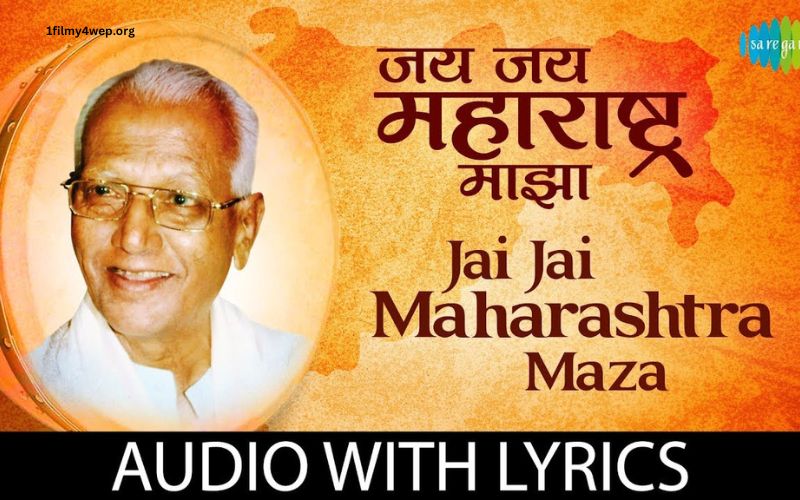“Jai Jai Maharashtra Maza,” a song that reverberates with pride and patriotism, is more than just a melody; it is the heartbeat of Maharashtra. The man behind this timeless anthem is Shahir Krishnarao Sable, a revered figure in Marathi culture and music. His composition has not only captured the essence of the state but has also become an anthem that instills a sense of unity and pride among Maharashtrians across the globe.
The Man Behind the Anthem: Shahir Krishnarao Sable
Shahir Krishnarao Sable, fondly known as Shahir Sable, was a multifaceted artist whose contributions to Marathi folk music and theatre are unparalleled. Born on September 3, 1923, in Pasarni, a village in the Satara district of Maharashtra, Sable’s early life was steeped in the rich cultural traditions of his homeland. He was not only a singer but also a playwright, director, and a folk artist who played a pivotal role in popularizing the folk arts of Maharashtra.
Shahir Sable’s journey into the world of music and theatre began at a young age. His deep understanding of the folk traditions and his ability to weave them into contemporary forms made him a beloved figure in Marathi households. He was a master of Lavani, Powada, and Tamasha—traditional forms of Marathi music and dance. His contribution to these art forms earned him the title “Shahir,” which means a folk poet or troubadour.
The Creation of “Jai Jai Maharashtra Maza”
The song “Jai Jai Maharashtra Maza” was composed during a time when Maharashtra was undergoing significant political and social changes. The state of Maharashtra was formed on May 1, 1960, after a long struggle for the recognition of Marathi-speaking regions. This period saw a surge in Marathi pride and identity, and Sable’s song perfectly captured the spirit of this new era.
The lyrics of “Jai Jai Maharashtra Maza” are a heartfelt ode to the state’s beauty, culture, and resilience. The song begins with the lines:
“Jai Jai Maharashtra Maza, Garja Maharashtra Maza” (Hail Hail My Maharashtra, Roaring My Maharashtra)
These opening lines set the tone for the entire song, encapsulating the pride and glory of Maharashtra. Sable’s powerful voice and emotive delivery bring the lyrics to life, making the listener feel the essence of the land.
The Lyrics: A Deep Dive
Let’s take a closer look at the lyrics and their meanings to understand why this song resonates so deeply with the people of Maharashtra.
“Jai Jai Maharashtra Maza, Garja Maharashtra Maza” (Hail Hail My Maharashtra, Roaring My Maharashtra)
The repetition of “Jai Jai” and “Garja” (roaring) emphasizes the strength and vitality of the state. It’s a call to recognize and celebrate Maharashtra’s greatness.
“Sahyadricha Girivarchi Saptarangi Phulanchi Niwad Tula” (The seven-colored flowers from the peaks of Sahyadri are your choice)
Here, Sable describes the natural beauty of the Sahyadri mountain range, which is a significant part of Maharashtra’s landscape. The “seven-colored flowers” symbolize the diverse and vibrant culture of the state.
“Pandharichi Vari Aalandi-Cha Dnyaneshwar” (The pilgrimage of Pandharpur, the wisdom of Dnyaneshwar)
This line references two important spiritual and cultural landmarks of Maharashtra. Pandharpur is a major pilgrimage site, and Sant Dnyaneshwar is a revered saint and philosopher whose teachings have deeply influenced Marathi culture.
“Bhavgeete, Bhaktigeete, Nach Ga Avdhoot, Nach Ga Avdhoot” (Songs of emotions, songs of devotion, dance Avadhoot, dance Avadhoot)
Sable highlights the rich tradition of Bhavageet (emotional songs) and Bhaktigeet (devotional songs) in Maharashtra. The term “Avadhoot” refers to a mystic or a saint, urging them to celebrate through dance and music.
Cultural Impact
The impact of “Jai Jai Maharashtra Maza” extends far beyond its initial release. It has become a cultural symbol, often performed at public events, political rallies, and school functions. The song evokes a sense of belonging and pride, reminding Maharashtrians of their shared heritage and the collective achievements of their state.
One of the most memorable renditions of this song was by the legendary singer Lata Mangeshkar. Her version added a new dimension to the song, further embedding it into the cultural consciousness of Maharashtra. The song has also been covered by various artists over the years, each bringing their unique interpretation while preserving its core essence.
Shahir Sable’s Legacy
Shahir Krishnarao Sable’s contribution to Marathi culture is immeasurable. He was a torchbearer of Maharashtra’s folk traditions and played a crucial role in keeping them alive in the modern era. His works transcended mere entertainment; they were a means of preserving and promoting the rich cultural heritage of the state.
Apart from “Jai Jai Maharashtra Maza,” Sable composed numerous songs and plays that reflected the social and political milieu of his times. His works often carried a message of social justice, equality, and the importance of cultural identity. He was awarded several honors for his contributions, including the Padma Shri, one of India’s highest civilian awards.
Conclusion
“Jai Jai Maharashtra Maza” is more than just a song; it is an anthem that embodies the spirit of Maharashtra. Shahir Krishnarao Sable’s masterful composition and poignant lyrics capture the beauty, pride, and resilience of the state. This song continues to inspire and unite Maharashtrians, reminding them of their rich cultural heritage and the indomitable spirit of their land.
As Maharashtra continues to evolve and progress, the timeless words of “Jai Jai Maharashtra Maza” serve as a reminder of the state’s glorious past and the promise of a bright future. Through this anthem, Shahir Sable has left an indelible mark on the hearts of the people, ensuring that his legacy will be cherished for generations to come.


На нашем портале вам предоставляется возможность наслаждаться обширной коллекцией игровых слотов.
Слоты обладают живой визуализацией и захватывающим игровым процессом.
Каждый игровой автомат предоставляет уникальные бонусные раунды, улучшающие шансы на успех.
1win casino
Игра в игровые автоматы предназначена любителей азартных игр всех мастей.
Есть возможность воспользоваться демо-режимом, после чего начать играть на реальные деньги.
Проверьте свою удачу и получите удовольствие от яркого мира слотов.